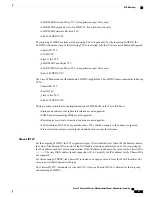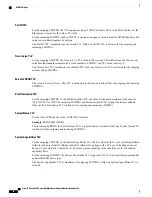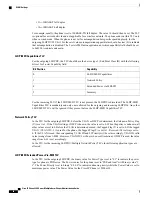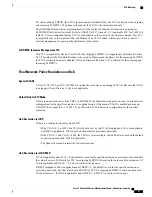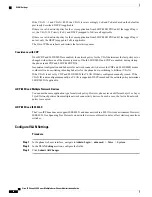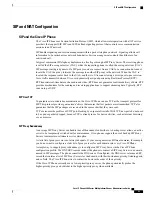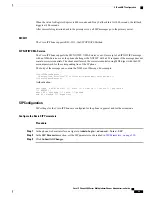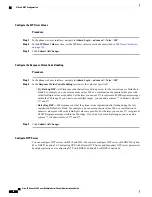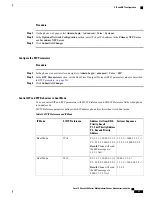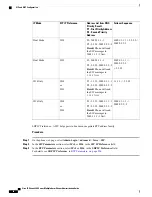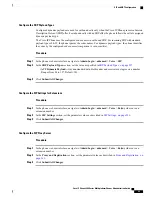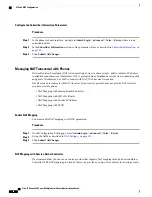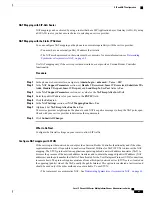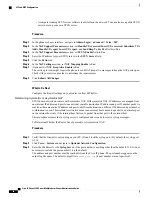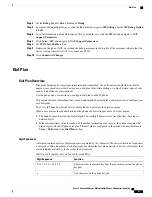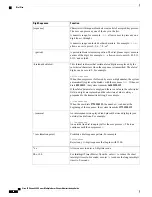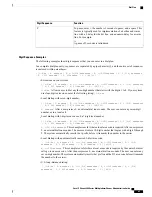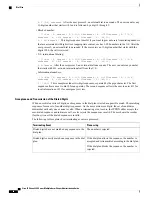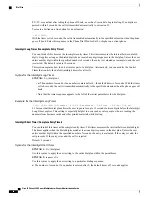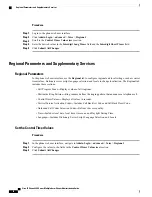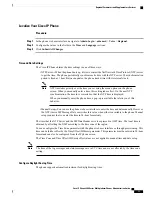
NAT Mapping with SIP-ALG Router
NAT mapping can be achieved by using a router that has a SIP Application Layer Gateway (ALG). By using
a SIP-ALG router, you have more choices in selecting an service provider.
NAT Mapping with the Static IP Address
You can configure NAT mapping on the phone to ensure interoperability with the service provider.
•
You must have an external (public) IP address that is static .
•
The NAT mechanism used in the router must be symmetric. for more information, see
Symmetric or Asymmetric NAT, on page 62
.
Use NAT mapping only if the service provider network does not provide a Session Border Controller
functionality.
Procedure
Step 1
In the phone web user interface, navigate to
Admin Login
>
advanced
>
Voice
>
SIP
.
Step 2
In the
NAT Support Parameters
section, set
Handle VIA received
,
Insert VIA received
,
Substitute VIA
Addr
,
Handle VIA rport
,
Insert VIA rport
, and
Send Resp To Src Port
fields to
Yes
.
Step 3
In the
NAT Support Parameters
section, set a value for the
NAT Keep Alive Intvl
field.
Step 4
Enter the public IP address for your router in the
EXT IP
field.
Step 5
Click the
Ext(n)
tab.
Step 6
In the
NAT Settings
section, set
NAT Mapping Enable
to
Yes
.
Step 7
(Optional) Set
NAT Keep Alive Enable
to
Yes
.
The service provider might require the phone to send NAT keep alive messages to keep the NAT ports open.
Check with your service provider to determine the requirements.
Step 8
Click
Submit All Changes
.
What to Do Next
Configure the firewall settings on your router to allow SIP traffic.
Configure NAT mapping with STUN
If the service provider network does not provide a Session Border Controller functionality and if the other
requirements are met, it is possible to use Session Traversal Utilities for NAT (STUN) to discover the NAT
mapping. The STUN protocol allows applications operating behind a network address translator (NAT) to
discover the presence of the network address translator and to obtain the mapped (public) IP address (NAT
addresses) and the port number that the NAT has allocated for the User Datagram Protocol (UDP) connections
to remote hosts. The protocol requires assistance from a third-party network server (STUN server) located on
the opposing (public) side of the NAT, usually the public Internet. This option is considered a last resort and
should be used only if the other methods are not available. To use STUN:
•
The router must use asymmetric NAT . See
Determining Symmetric or Asymmetric NAT, on page 62
Cisco IP Phone 8800 Series Multiplatform Phones Administration Guide
61
SIP and NAT Configuration
Summary of Contents for 8851
Page 23: ...P A R T I About the Cisco IP Phone Technical Details page 9 Cisco IP Phone Hardware page 21 ...
Page 24: ......
Page 36: ...Cisco IP Phone 8800 Series Multiplatform Phones Administration Guide 20 USB Port Information ...
Page 48: ......
Page 98: ......
Page 136: ......
Page 168: ...Cisco IP Phone 8800 Series Multiplatform Phones Administration Guide 152 XML Services ...
Page 204: ...Cisco IP Phone 8800 Series Multiplatform Phones Administration Guide 188 Capture Packets ...
Page 210: ......

